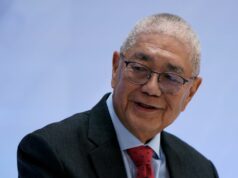Yield on 20-year Treasury bonds to climb amid lack of fresh leads
THE government will likely see higher rates for its reissued 20-year Treasury bonds (T-bond) offer on Tuesday as the market stays on the sidelines amid a lack of fresh leads.
The Bureau of the Treasury (BTr) is looking to raise P20 billion via reissued T-bonds with a remaining life of 19 years and two months and a coupon rate of 6.75%.
For Kevin S. Palma, peso debt trader of Robinsons Bank Corp., the rate will likely fall within the 5.2-5.3% range, as “the lack of firm leads have led bond holders to reduce risk the past few weeks.”
Last Sept. 24, the BTr decided to reject a total of P30.7 billion in bids for the 20-year bonds as the market asked for higher rates.
Had the government made a full award, the papers would have fetched an average rate of 5.356%, higher than the 5.015% quoted when the securities were last offered on July 30.
At the secondary market on Friday, the 20-year bonds were quoted at 5.234%, based on the PHP Bloomberg Valuation (BVAL) Service Reference Rates published on the Philippine Dealing System’s website.
UnionBank of the Philippines, Inc. Chief Economist Ruben Carlo O. Asuncion said the auction may attract huge demand from investors looking to park their excess funds following the central bank’s moves to boost liquidity.
“I do expect the market to again oversubscribe as institutions and other players are looking for ways to maximize freed up funds due to the central bank’s current expansionary moves,” Mr. Asuncion said in an e-mail on Friday.
“Players would want to lock in with longer tenors especially with the economy in 2020 particularly having better prospects,” he added.
Last Friday, the central bank said interbank borrowings will no longer be classified as deposit substitutes subject to reserve requirements under the new Bangko Sentral ng Pilipinas (BSP) Charter.
The BSP said the move to exclude such types of borrowings from the reserve requirement of banks and quasi-banks “will result in freed-up liquidity” which can be used for other lending and investment activities.
This follows the regulator’s move to cut banks’ reserve requirement ratios (RRR).
The reserve ratio of universal and commercial banks now stands at 15% following the effectivity of the 100-basis-point (bp) cut in RRR announced in September. Likewise, the RRR of thrift banks is now at five percent, while that for rural banks stands at three percent.
The BSP announced last month that the RRR of universal, commercial and thrift banks will be slashed by another 100 bps effective December, bringing total reductions to their reserve ratios for this year to 400 bps. This cut will also apply to the reserve ratio of nonbank financial institutions with quasi-banking functions (NBQBs).
This will bring the reserve ratio of universal and commercial lenders to 14% by December, while the RRR of thrift banks will stand at four percent. On the other hand, the reserve ratio of NBQBs will be cut to 14% next month.
Meanwhile, investors have been waiting for news on the US-China trade talks, which affected the local government securities (GS) market, Mr. Palma said.
“Price action in the GS market was choppy the previous week due to mixed signals from US and China trade negotiations, but further rise in yields was tempered by demand in the short to belly-end of the curve in the form of reinvestment from a bond maturity last Friday,” he said.
The government is set to borrow P220 billion from the local market this quarter, broken down into P100 billion in Treasury bills and P120 billion via T-bonds.
It is looking to raise P1.189 trillion this year from local and foreign sources to fund its budget deficit, which is expected to widen to as much as 3.2% of gross domestic product. — B.M. Laforga



